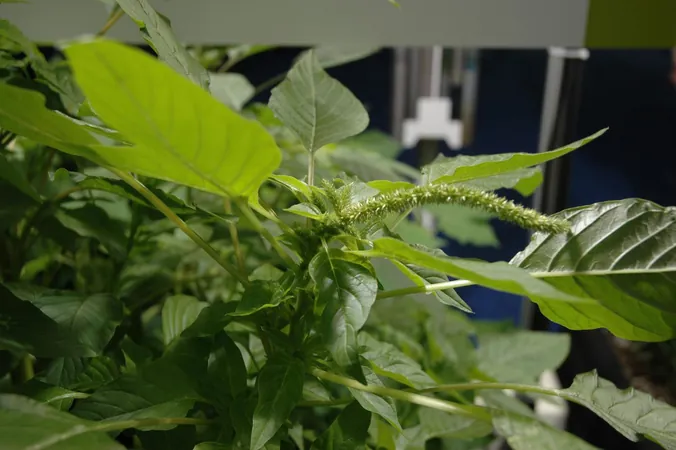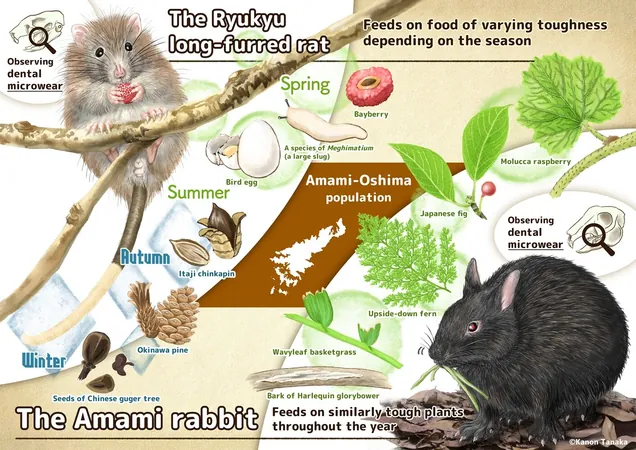
Unveiling the Threat: How Farmers Can Combat Herbicide-Resistant Weeds
2025-01-08
Author: Rajesh
Hidden beneath the crops growing in fields are some of agriculture's most daunting adversaries: herbicide-resistant weeds. These resilient botanicals have evolved alongside advancements in farming technology, often outpacing our efforts to control them, making them the “most-wanted” species for farmers everywhere.
Herbicide-resistant weeds are a substantial concern for farmers, leading to significant financial losses and time spent battling the burly foes. Isaac Schroeder, an agronomist at Superior Ag in southwest Indiana, highlighted that adapting to this resistance requires more investment in robust weed management strategies. "It's crucial we manage these weeds before they sprout," he pointed out.
Costly Delays: The Rising Battle Against Weeds
The financial stakes of herbicide use have surged dramatically over the years. In 2010, the average price of herbicides was $25 per acre for corn and $20 for soybeans. By 2024, those figures skyrocketed to $45 for corn and $53.50 for soybeans, highlighting a concerning trend that burdens farmers further as they strive to maintain crop yields.
Spotlight on Top Contenders
Several weed species have become notorious in agricultural circles due to their hardiness and adaptability. Here’s a closer look at some of the top offenders:
- **Palmer Amaranth** Often regarded as the most problematic weed in cotton and soybeans, Palmer amaranth produces a staggering 600,000 seeds per plant under optimal moisture conditions. It has developed resistance to multiple herbicide groups, which makes controlling it extremely challenging.
- **Waterhemp** Ranked second in troublesome weeds, it can produce between 250,000 and 1 million seeds per plant. Its dioecious nature makes it particularly evasive, complicating post-emergent management.
- **Common Ragweed** This competitive weed can reduce soybean yields by up to 76%. It produces an impressive 62,000 seeds and can survive as long as 30 years buried in the soil.
- **Giant Ragweed** Known for its aggressive emergence, it can produce up to 10,000 seeds per plant. If allowed to flourish, it quickly overshadows crops.
The Threat of Resistance
Herbicides once thought to be effective have faltered as weeds evolve. Palmer amaranth and waterhemp, among others, have gained multiple resistances, compelling farmers to revise their strategies and adopt more integrated weed management systems.
Crucial Recommendations for Resistance Management
Tommy Butts, a weed science specialist at Purdue Extension, emphasizes the necessity of using "residuals, residuals, residuals," advocating for an early and integrated approach in herbicide application. In the fight against these persistent weeds, employing a multi-faceted approach, which includes the use of cover crops and innovative farming techniques, could markedly enhance crop resilience and minimize weed populations.
Larry Steckel from the University of Tennessee suggests that mixing herbicides, especially for tough species like amaranths, can yield better control, and advises farmers to remain attentive to management practices that can significantly reduce seed viability over time.
Innovative Solutions on the Horizon
While the immediate solution may appear bleak, there is hope in the development of new herbicide modes of action. However, the pace of agricultural regulations can slow down these advancements, leading experts to recommend utilizing existing tools efficiently in the meantime.
It's More Than Just Spraying
Beyond just chemicals, the fight against herbicide-resistant weeds demands a holistic perspective that includes crop rotation, cover cropping, and even timing cultivation to optimize competitiveness against weed emergence. Farmers like Joseph Kern have found success with cover crops that suppress weed growth, showcasing that sustainable practices can improve productivity.
In conclusion, as resistant weed species become increasingly entrenched in our agricultural landscapes, the combination of improved strategies, newer technologies, and an integrated approach will be vital in securing the future of farming. We must foster resilience in our cropping systems to outsmart these seemingly insurmountable challenges. Will the measures taken this season shift the future landscape of agriculture? Let's hope so!




 Brasil (PT)
Brasil (PT)
 Canada (EN)
Canada (EN)
 Chile (ES)
Chile (ES)
 Česko (CS)
Česko (CS)
 대한민국 (KO)
대한민국 (KO)
 España (ES)
España (ES)
 France (FR)
France (FR)
 Hong Kong (EN)
Hong Kong (EN)
 Italia (IT)
Italia (IT)
 日本 (JA)
日本 (JA)
 Magyarország (HU)
Magyarország (HU)
 Norge (NO)
Norge (NO)
 Polska (PL)
Polska (PL)
 Schweiz (DE)
Schweiz (DE)
 Singapore (EN)
Singapore (EN)
 Sverige (SV)
Sverige (SV)
 Suomi (FI)
Suomi (FI)
 Türkiye (TR)
Türkiye (TR)
 الإمارات العربية المتحدة (AR)
الإمارات العربية المتحدة (AR)